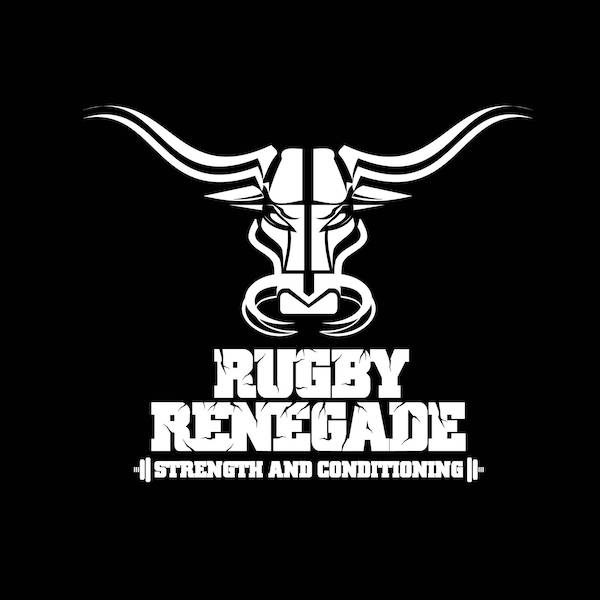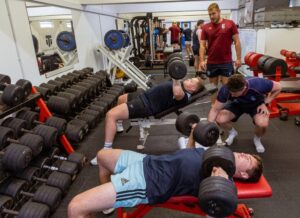The full squat should be at the corner stone of any rugby players strength and conditioning programme because when implemented correctly it is not only effective at building bigger, stronger and faster players, but it also has the potential to make players more resistant to injury.
The only time that a player should not perform a full range-of-motion (ROM) is if they lack the mobility, mainly when flexion of their lumbar spine occurs. When a player repeatedly allows flexion of the lumbar spine to occur under heavy loads they are at a high risk of injuring their lumbar spine, not an injury you wish any player to sustain!
If a player does lack the mobility to squat to a full ROM, incorporating assistance exercises, such as Lunges, Split Squats, Step Ups, Goblet Squats will allow a deep knee flexion and help improve mobility.

For many, the thought process is that full squats, where you’re hip crease is below parallel, are dangerous.
Many Strength and Conditioning coaches/PTs often implement strength programmes that do not properly work muscles through their full ROM. For example, squatting to only parallel or slightly above will overload the middle and top end range of the squat, but neglect the bottom range.
The result is a rugby player who can squat heavy loads, but only through a limited ROM. It has been established that players who perform the squat through a full ROM have fewer incidences of knee injuries.
How often do you do or do you see players performing partial squats? Its extremely common, far more common than seeing a player squat to a full ROM in the weights room. Time and time again players will load up the bar with considerable weight, squat down and rise, rack the bar and add again more weight, yet never perform to a full ROM!
If players continue this way then all that will occur are muscle imbalances that will lead to an unfortunate increase risk of injuries.
If you understand the knee joint, it is most stable at full extension, as in standing, and at the bottom of a full squat. It is the least stable at the mid-way point (approximately 90 degrees), which makes it the worst possible place to stop and change direction of movement under load.
In a full squat, the glutes and hamstrings absorb the forces imposed on the body, whereas with a half squats the less powerful muscles of the knee absorb a considerable amount of the forces at a point where the ligaments of the knee provide little stability.
Squatting to a full ROM strengthens the connective tissues of the knee, it also thoroughly targets the vastus medialis oblique (VMO) creating more balance between the four heads of the quadriceps because they all “pull” on the patella (kneecap) in slightly different directions.
The VMO, (the teardrop shaped muscle on the inside of the knee) is the only head of the quadriceps that crosses the knee joint, which makes its development critical for knee stabilization. Together with the semimembranosus muscle of the hamstrings, a thoroughly developed VMO helps protect the medial (inside) aspect of the knee.
If players regularly perform squats to a partial range, the VMO is likely to be underdeveloped that will leave the knee joint prone to injury.
If players have the mobility and get told by coaches that full ROM squats are bad for them then be worried! Squat to full depth to become a better player on the pitch but also to reduce the risk of injury!
Written by
Robin Sowden-Taylor
Senior S&C Coach
Cardiff Blues





